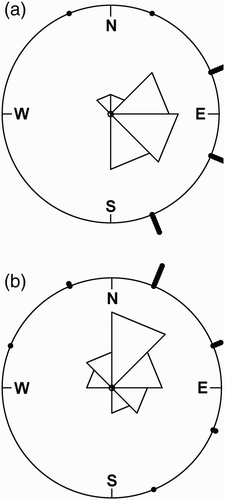Figures & data
Table 1. The number of Common Pochards and Tufted Ducks marked on the seven study areas (years of monitoring in the brackets) and the number of birds re-encountered alive (seen alive = physical recaptures and re-sightings), recovered dead, re-encountered alive > 10 km and < 10 km from the ringing site and recovered dead < 10 km from the ringing site.
Figure 1. The lake of Grand-Lieu and the seven other ringing sites of Common Pochards and Tufted Ducks which are part of our monitoring scheme in France. On Grand-Lieu, light grey areas represent open water and aquatic vegetation; dark grey areas indicate the various habitats types surrounding open water (prairies, crops, reed banks, forested areas, etc.). The black dot is the ringing site. (Scale: Grand-Lieu = m, French territory and Western Europe, km).
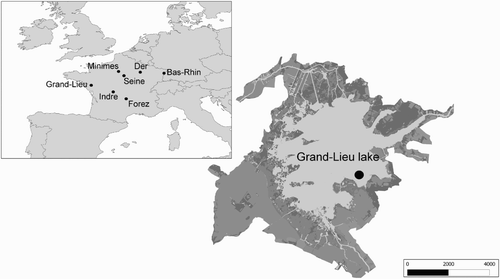
Figure 2. Distribution of (a) recaptures, (b) resightings of Common Pochards and Tufted Ducks from 2003–04 to 2009–10.
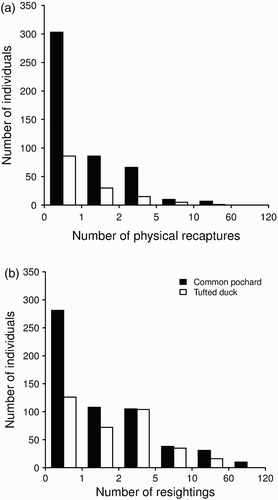
Figure 3. Distribution of movement distances between the ringing site and the site of recovery (a) or the site of resighting (b) (randomly drawn resighting locations among all available resighting locations), performed by Common Pochards and Tufted Ducks during the same wintering season of ringing. The time interval between ringing and recovery was 17.8 ± 13.7 days (1–59) for Tufted Duck and 31 ± 21.6 days (1–92) for Common Pochard. The time interval between ringing and resighting was 37.8 ± 36 days (0–154) for Tufted Ducks and 45.5 ± 36.9 days (0–149) for Common Pochards.
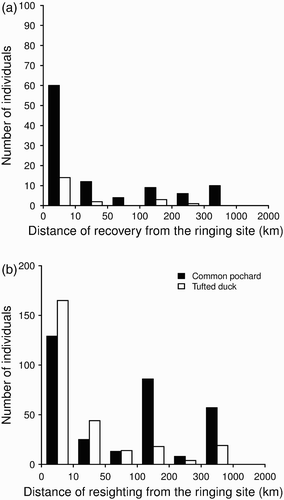
Figure 4. Movements of Common Pochards and Tufted Ducks from the lake of Grand-Lieu during autumn migration (October–November, n = 57) and midwinter (December–February, n = 86). Only movements greater than 10 km are shown.
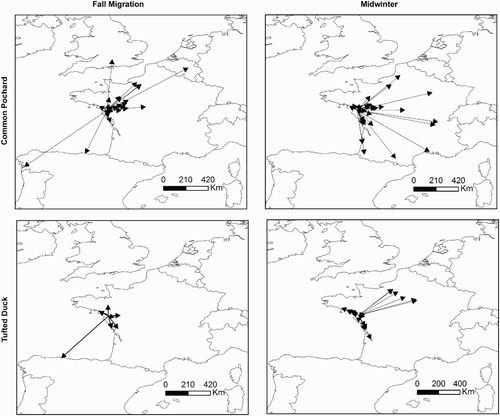
Table 2. Model selection for the analysis of the determinism of log-transformed distances of movements computed by period (autumn migration versus midwinter) or month. Global models for period effect and monthly distances included main effects (time, age, sex, species, month/period or NAO index and WS) and their second-order interactions. AICc, Aikaike information criterion for model selection corrected for small sample size; WS, winter severity; time, number of days between two encounters. Movement distances averaged over the best models were within 7 km.
Figure 5. Directions of movements of Common Pochards from the lake of Grand-Lieu during midwinter (December–February) according to winter severity: (a) winters colder than the average (Hellmann index > mean, i.e. 7.43) and (b) winters milder than the average (Hellmann index < 7.43).
